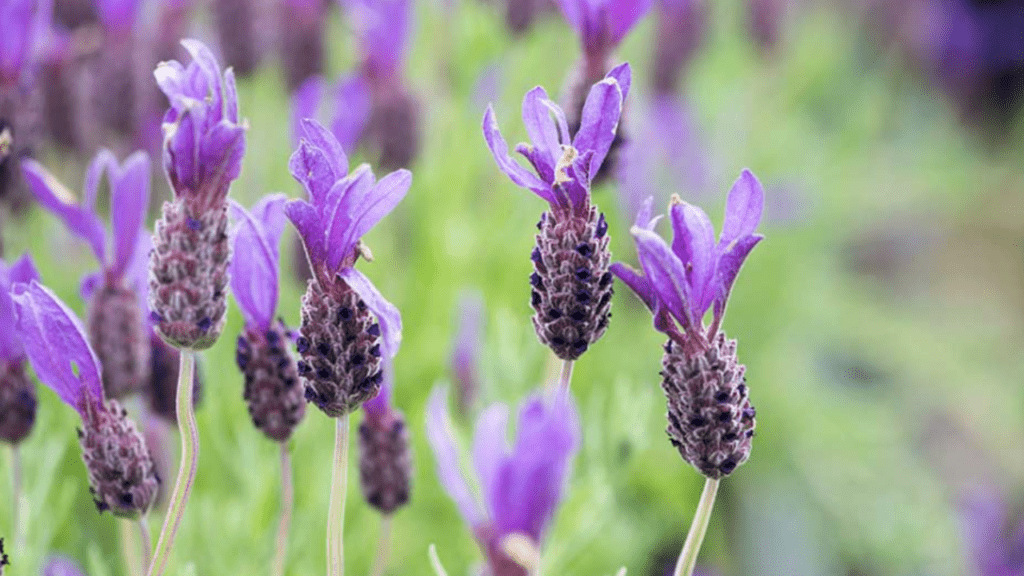
Care for Lavender Trees: Your Ultimate Guide to Healthy Growth
Lavender trees, also known as Lavandula, are a delightful addition to any garden or indoor space with their aromatic scent and beautiful purple flowers. To ensure your lavender trees thrive, it’s crucial to understand the proper care for lavender trees. This guide will walk you through everything you need to know about growing and maintaining healthy lavender trees.
Table of Contents
ToggleUnderstanding Lavender Trees
Description and characteristics of lavender trees
Lavender trees, also known as Lavandula, are a delightful addition to any garden or indoor space with their aromatic scent and beautiful purple flowers. They are known for their relaxing and calming fragrance, making them a popular choice for aromatherapy and herbal remedies. Lavender trees are typically small, woody shrubs with narrow, silver-green leaves and clusters of fragrant purple flowers. They thrive in well-drained soil and sunny locations, making them a great addition to a variety of landscapes. With the right care and maintenance, lavender trees can be a stunning and fragrant addition to your outdoor or indoor space.
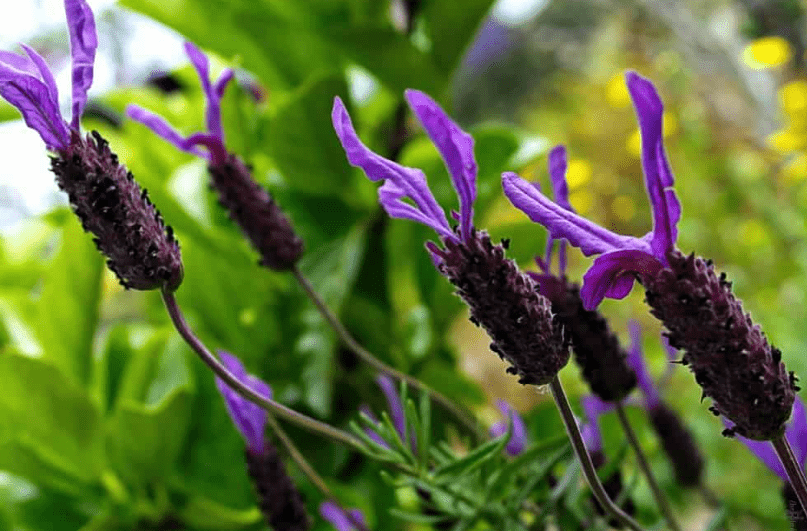
Popular varieties of lavender trees
Include English Lavender (Lavandula angustifolia), French Lavender (Lavandula stoechas), and Spanish Lavender (Lavandula dentata). English Lavender is known for its sweet aroma and is commonly used in potpourris and sachets. French Lavender has a unique pineapple-like fragrance and is often used in essential oils and perfumes. Spanish Lavender is recognized for its distinctive toothed leaves and strong, pungent aroma. Each variety of lavender tree has its own unique characteristics and fragrance, so it’s important to choose the one that best suits your preferences and needs. With the right care and attention, you can enjoy the beauty and fragrance of lavender trees in your garden or home.
Differences between lavender trees and other types of lavender
Include their growth habits and overall appearance. Lavender trees, also known as Lavandula stoechas, are characterized by their woody stems and upright growth habit, which gives them a tree-like appearance. In contrast, other types of lavender, such as English Lavender and Spanish Lavender, have a more compact and bushy growth habit. Additionally, lavender trees typically have larger and more showy flowers compared to other varieties, making them a striking focal point in any garden or landscape. Another key difference is their fragrance, with each variety of lavender having its own unique scent profile. Understanding these differences can help you choose the right type of lavender for your specific needs and preferences. Whether you prefer the tree-like appearance of lavender trees or the compact growth of other varieties, there is a type of lavender that will suit your garden or indoor space perfectly. With proper care and attention, you can enjoy the beauty and fragrance of these versatile and beloved plants.
Benefits of Growing Lavender Trees
Aesthetic appeal and decorative uses
Lavender trees, also known as Lavandula stoechas, are a beautiful addition to any garden or landscape. Their woody stems and upright growth habit give them a tree-like appearance, making them a striking focal point. The larger and more showy flowers of lavender trees make them a visually appealing choice for adding color and fragrance to outdoor spaces. In addition to their aesthetic appeal, lavender trees have a unique scent profile, adding a pleasant fragrance to the air. They can also be used for decorative purposes, such as in floral arrangements or as dried flowers for potpourri. Whether you choose lavender trees or other varieties, the beauty and fragrance of lavender can enhance the aesthetic appeal of your outdoor or indoor space.
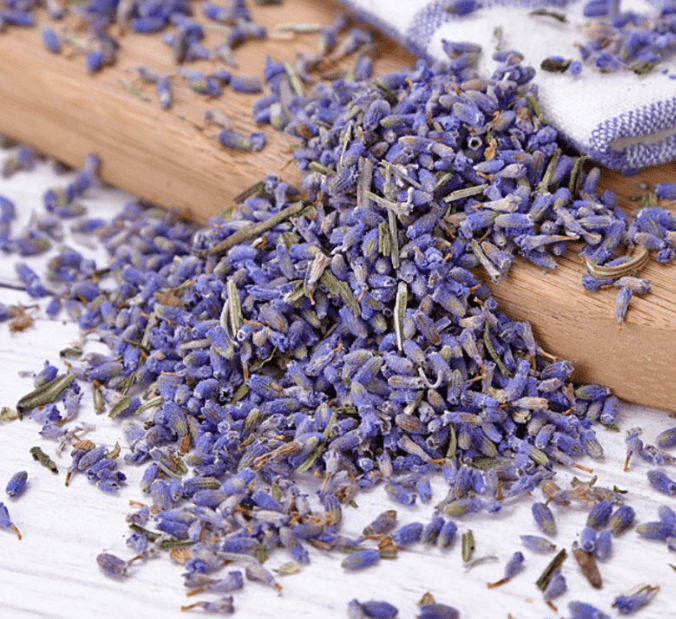
Fragrance and its therapeutic benefits
Are important aspects of lavender trees. The soothing and calming scent of lavender has been known to have therapeutic effects, such as reducing stress and anxiety. The fragrance can help improve mood and promote relaxation, making it a popular choice for aromatherapy and holistic healing practices. In addition to its aromatic benefits, lavender has been used in traditional medicine for its anti-inflammatory and antimicrobial properties. It can be used in a variety of forms, such as essential oils, dried flowers, or sachets, to enjoy its therapeutic benefits. By incorporating lavender trees into your garden or home, you can not only enjoy their aesthetic appeal but also experience the therapeutic benefits of their fragrance. With proper care and attention, you can cultivate a beautiful and fragrant garden that contributes to your overall well-being.
Role in attracting pollinators and enhancing biodiversity
Lavender trees play a vital role in attracting pollinators and enhancing biodiversity. The fragrant flowers of the lavender tree attract bees, butterflies, and other pollinators, which helps in the pollination of other plants in the surrounding area. This is crucial for the reproduction and survival of many plant species. Additionally, the presence of lavender trees can enhance the overall biodiversity of an ecosystem by providing a habitat for beneficial insects and wildlife. By planting lavender trees in your garden or landscape, you can contribute to the health and diversity of the local ecosystem while also enjoying the beautiful fragrance and aesthetic appeal of the trees. It’s a win-win situation for both you and the environment.
Choosing the Right Lavender Tree
Factors to consider (climate, space, variety)
When choosing a lavender tree for your garden, there are a few factors to consider. Firstly, consider the climate of your area. Lavender trees thrive in sunny and dry conditions, so make sure your climate is suitable for these trees. Additionally, consider the space you have available for the tree. Lavender trees can grow quite large, so ensure that you have enough space for them to spread out. Finally, there are many different varieties of lavender trees to choose from, so consider which variety will best suit your garden and landscape. By taking these factors into account, you can cultivate a beautiful and fragrant garden that contributes to your overall well-being.
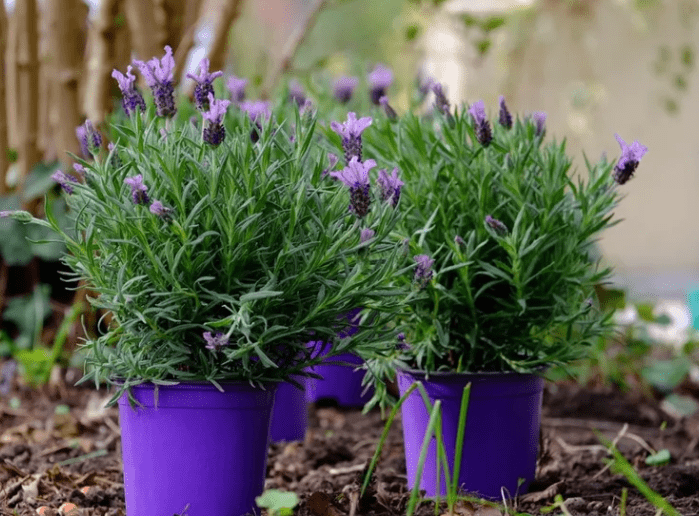
Tips for selecting healthy plants
When selecting healthy plants for your garden, there are a few key factors to keep in mind. Firstly, choose plants that are free from any signs of disease or pests. Look for vibrant, green leaves and sturdy stems to ensure the plant is in good health. Additionally, consider the root system of the plant. Healthy plants will have well-developed roots that are not overcrowded in their containers. It’s also important to select plants that are appropriate for your climate and growing conditions. Research the specific needs of each plant to ensure they will thrive in your garden. Finally, don’t be afraid to ask for advice from nursery and garden center staff, as they can provide valuable insights and recommendations for selecting healthy plants. By taking these tips into consideration, you can create a thriving and beautiful garden that will bring you joy for years to come.
Where to buy lavender trees
Lavender trees can be purchased from nurseries, garden centers, and online plant retailers. When buying lavender trees, it’s important to look for plants that are in good health. Look for vibrant, green leaves and sturdy stems. Check the root system to ensure it is well-developed and not overcrowded in its container. Additionally, consider the specific needs of the plant in terms of climate and growing conditions. Researching the specific needs of each plant will ensure that it will thrive in your garden. Don’t hesitate to ask for advice from nursery and garden center staff, as they can offer valuable insights and recommendations. By following these tips, you can select healthy lavender trees and create a beautiful garden that will bring you joy for years to come.
Planting Lavender Trees
Soil requirements and preparation
When planting lavender trees, it’s important to consider the soil requirements and preparation. Lavender trees thrive in well-drained soil with a slightly alkaline pH level. Before planting, it’s important to prepare the soil by adding organic matter, such as compost, to improve its texture and fertility. This will help to ensure that the lavender trees have the nutrients they need to grow and thrive. Additionally, it’s important to avoid overwatering the soil, as lavender trees prefer drier conditions. By taking the time to properly prepare the soil, you can create an ideal environment for your lavender trees to flourish.
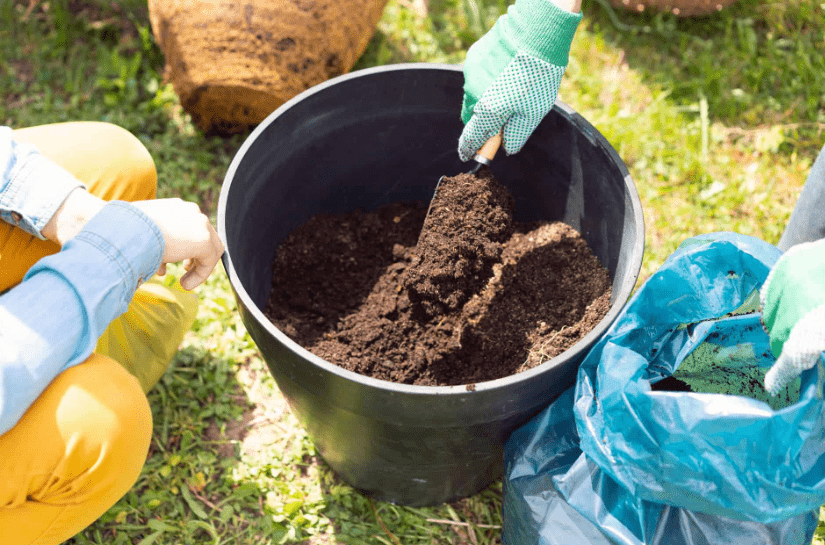
Ideal planting locations (sunlight and space considerations)
When selecting a location to plant lavender trees, it’s important to consider the sunlight and space requirements. Lavender trees thrive in full sunlight, so it’s best to choose a location that receives at least 6-8 hours of direct sunlight each day. This will ensure that the trees have the light they need to grow and produce beautiful blooms. Additionally, it’s important to allow for adequate spacing between lavender trees to prevent overcrowding. This will allow the trees to have enough room to grow and spread out, resulting in a healthier and more attractive garden. By carefully selecting the ideal planting locations for your lavender trees, you can create a stunning garden that will bring joy and beauty for years to come.
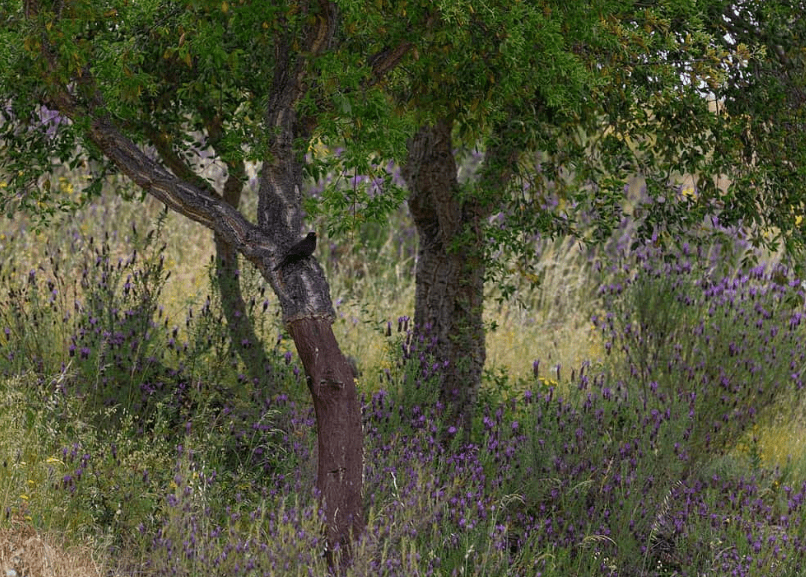
Step-by-step planting guide (both in pots and in the ground)
When planting lavender, it’s important to choose the right location and prepare the soil properly. If you’re planting in the ground, start by selecting a sunny spot with well-drained soil. Lavender thrives in full sunlight, so choose a location that receives at least 6-8 hours of direct sunlight each day. Next, prepare the soil by removing any weeds and adding some organic matter, like compost or aged manure, to improve drainage and fertility. If you’re planting in pots, choose a container with good drainage and fill it with a well-draining potting mix. In both cases, space the plants about 12-18 inches apart to allow for good air circulation.
When planting, dig a hole slightly larger than the root ball and gently loosen the roots before placing the plant in the hole. Backfill with soil and water thoroughly. After planting, water the lavender regularly, particularly during dry spells, but be careful not to overwater as lavender prefers drier conditions. Pruning the plants in the spring and again after flowering will help to promote bushy growth and more flowers. With the right location, soil preparation, and care, your lavender trees will thrive and bring beauty to your garden.
Watering and Feeding Lavender Trees
Proper watering techniques and schedules
Are essential for the health and growth of your plants. When it comes to watering lavender, it is important to water the plants regularly, especially during dry spells. However, it is equally important not to overwater, as lavender prefers drier conditions. It is best to water the plants deeply but infrequently, allowing the soil to dry out between watering. When watering, it is important to water at the base of the plant to avoid getting the foliage wet, which can lead to disease and rot.
In addition to proper watering, it is also important to feed your lavender trees. You can use a balanced fertilizer formulated for woody plants in the spring to promote healthy growth and flowering. Be sure to follow the instructions on the fertilizer package and avoid over-fertilizing, as this can lead to excessive foliage growth at the expense of flowers.
By providing the right amount of water and nutrients, you can help your lavender trees thrive and bring beauty to your garden. Remember to also prune the plants in the spring and after flowering to promote bushy growth and more flowers. With the right care and attention, your lavender trees will reward you with a beautiful display of fragrant blooms.
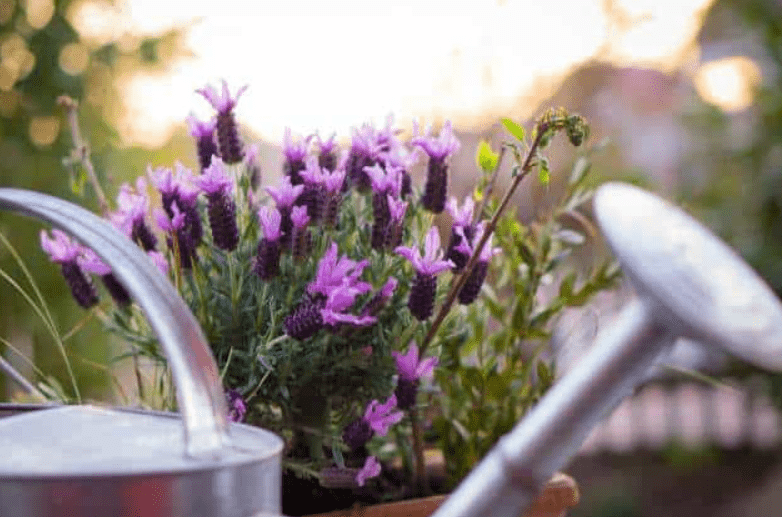
Signs of overwatering and underwatering
Can be easy to identify if you know what to look for. Overwatering can lead to yellowing leaves, wilting, and mold or fungus growth on the soil. On the other hand, underwatering can cause the leaves to become dry, crispy, and brown at the edges. It’s important to monitor the soil moisture and adjust your watering routine accordingly. One way to check for overwatering is to feel the soil. If it feels soggy or waterlogged, then you may be overwatering. If the soil feels dry and crumbly, then you may need to water more. It’s also important to take note of the weather conditions, as plants may need more water during hot and dry periods. By paying attention to the signs of overwatering and underwatering, you can ensure that your plants receive the right amount of water to thrive.
Fertilization: types, frequency, and methods
Fertilization is an important aspect of plant care, and there are various types, frequencies, and methods to consider. The three main types of fertilizers are organic, synthetic, and slow-release. Organic fertilizers are derived from natural sources like compost or animal manure, while synthetic fertilizers are chemically manufactured. Slow-release fertilizers provide a steady supply of nutrients over an extended period of time. When it comes to frequency, the general rule of thumb is to fertilize your plants every 4-6 weeks during the growing season. However, this can vary depending on the type of plant and its specific needs. As for methods, there are several ways to apply fertilizer, including topdressing, side dressing, and foliar feeding. Topdressing involves spreading fertilizer on the soil surface, while side dressing involves placing the fertilizer near the plant’s root zone. Foliar feeding involves spraying the leaves with a liquid fertilizer. It’s important to choose the right type of fertilizer, determine the appropriate frequency, and use the right method to ensure the health and vitality of your plants.
Pruning and Shaping Lavender Trees
Importance of regular pruning
Regular pruning is important for the health and growth of your plants. Pruning helps to promote new growth, improve air circulation, and maintain the overall shape and appearance of the plant. It also helps to remove dead or diseased branches, which can prevent the spread of disease and improve the overall health of the plant. Pruning also stimulates the production of flowers and fruit, leading to a more bountiful harvest. It is important to prune your plants at the right time and using the correct techniques to ensure the best results. Additionally, regular pruning can help to prevent the plant from becoming overgrown and unruly, making it easier to maintain and care for in the long run. Overall, regular pruning is an essential part of plant care and can contribute to a healthy and beautiful garden.
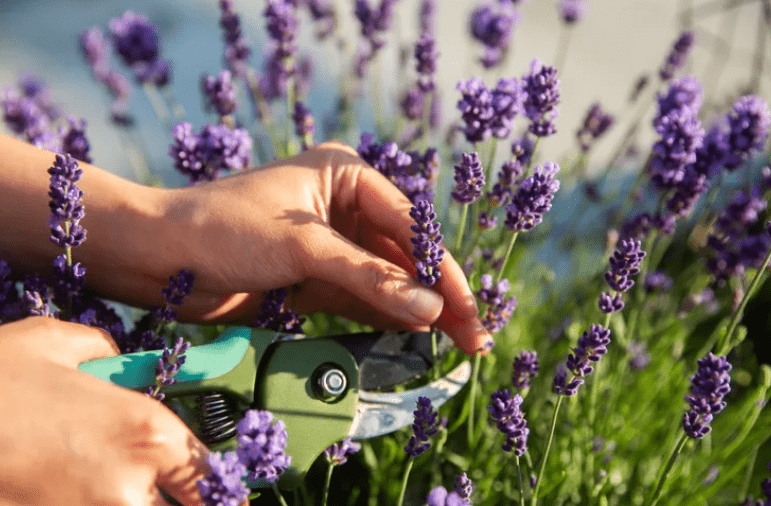
Best times for pruning
The best time for pruning lavender trees is in the early spring, just as new growth begins to emerge. This is when the plant is actively growing and can handle the stress of pruning. It’s important to avoid pruning in the fall or winter, as this can leave the plant vulnerable to cold temperatures and frost damage. Additionally, you can do some light pruning throughout the growing season to help maintain the shape and size of the plant. Be sure to use clean, sharp tools and make clean cuts to avoid damaging the plant. By pruning at the right time, you can promote healthy growth and ensure that your lavender trees continue to thrive.
Techniques for maintaining shape and encouraging healthy growth
Include regular pruning, which helps to remove dead or diseased branches, encourages new growth, and maintains the desired shape of the plant. When pruning, it’s important to use clean, sharp tools to make clean cuts and avoid damaging the plant. Additionally, pruning can help to improve air circulation and sunlight exposure, which are essential for the overall health of the plant.
In addition to pruning, it’s important to provide the proper care and maintenance for your lavender trees. This includes regular watering, well-draining soil, and proper sunlight exposure. It’s also important to monitor for any signs of pests or diseases and take prompt action to address any issues that may arise.
By following these techniques for maintaining shape and encouraging healthy growth, you can ensure that your lavender trees continue to thrive and contribute to a beautiful and vibrant garden.
Managing Pests and Diseases
Common pests affecting lavender trees (e.g., aphids, spider mites)
Lavender trees can be affected by common pests such as aphids and spider mites. These pests can cause damage to the foliage and overall health of the plant. It’s important to monitor for any signs of pest infestation and take prompt action to address the issue. This can include using insecticidal soap or neem oil to control the pests and prevent further damage to the plant. Additionally, maintaining a healthy environment for the lavender trees, including proper watering, well-draining soil, and adequate sunlight, can help to prevent pest infestations. Regular pruning can also help to remove dead or diseased branches and promote healthy growth, which can make the plant less vulnerable to pests. By implementing these techniques for maintaining shape and encouraging healthy growth, you can help your lavender trees thrive and resist common pests.
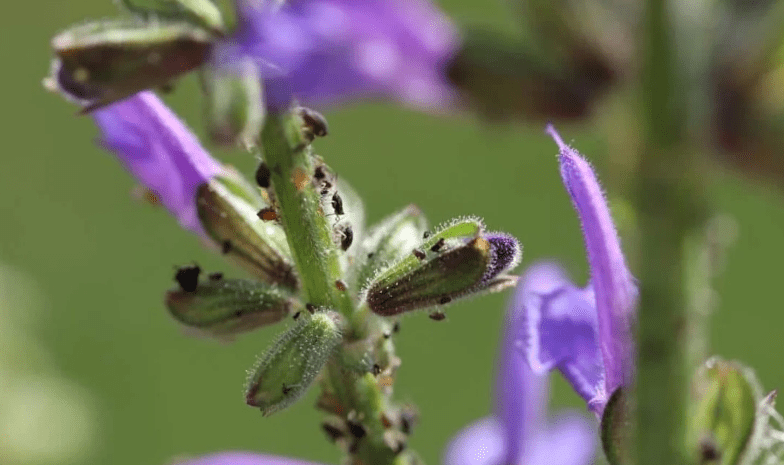
Typical diseases (e.g., root rot, powdery mildew)
Lavender trees can be susceptible to diseases such as root rot and powdery mildew. These diseases can be detrimental to the health and vitality of the plant if not properly managed. To prevent root rot, it is important to ensure that the soil has good drainage and that the plant is not overwatered. Avoiding overwatering can also help prevent powdery mildew, as this disease thrives in humid conditions. If signs of these diseases are present, it is important to take immediate action to address the issue. This can include removing affected areas of the plant, using fungicides, or adjusting environmental conditions to create a less hospitable environment for the disease. Regular monitoring and proper care can help prevent and manage these common diseases, ensuring that your lavender trees remain healthy and vibrant.
Prevention and treatment strategies
Are crucial when it comes to managing common diseases in lavender trees, such as root rot and powdery mildew. Root rot can be prevented by ensuring that the soil has good drainage and avoiding overwatering the plant. Powdery mildew, on the other hand, thrives in humid conditions, so it is important to prevent overwatering to avoid this disease as well. If signs of these diseases are present, immediate action should be taken to address the issue. This can include removing affected areas of the plant, using fungicides, or adjusting environmental conditions to create a less hospitable environment for the disease. Regular monitoring and proper care are essential in preventing and managing these common diseases, ensuring that your lavender trees remain healthy and vibrant.
Environmental Conditions and Seasonal Care
Temperature and humidity preferences
Are important factors in the health and growth of lavender trees. Lavender thrives in warm, sunny climates with well-drained soil. It prefers temperatures between 60-70 degrees Fahrenheit and can tolerate temperatures as high as 90 degrees Fahrenheit. It is important to avoid overwatering and ensure good air circulation to prevent the development of powdery mildew, which thrives in humid conditions. During the winter, it is important to protect lavender trees from freezing temperatures by covering them or bringing them indoors. Regular monitoring and proper care can help prevent and manage these common diseases, ensuring that your lavender trees remain healthy and vibrant. It is crucial to pay attention to environmental conditions and provide seasonal care to maintain the health and vitality of your lavender trees.
Seasonal care tips for winter and summer
In order to ensure the health and well-being of your lavender trees, it is important to provide seasonal care. During the winter, it is essential to protect lavender trees from freezing temperatures by covering them or bringing them indoors. This will help to prevent damage to the trees and ensure their survival through the colder months. In the summer, it is important to monitor the temperature and humidity levels, as well as to provide adequate water and proper air circulation. Lavender thrives in warm, sunny climates with well-drained soil, so it is important to create an environment that mimics these conditions. Regular monitoring and proper care can help prevent and manage common diseases, ensuring that your lavender trees remain healthy and vibrant throughout the changing seasons. By paying attention to environmental conditions and providing seasonal care, you can help your lavender trees thrive year-round.
Adjusting care routines based on weather changes
Is essential to ensure the health and well-being of your plants. During the winter, it’s important to protect your plants from freezing temperatures by covering them or bringing them indoors. This will help prevent damage and ensure their survival through the colder months. In the summer, it’s important to monitor the temperature and humidity levels, as well as provide adequate water and proper air circulation. It’s also important to provide shade during extremely hot days to protect your plants from sunburn. Adjusting your care routine based on the season will help your plants thrive and remain healthy. By paying attention to environmental conditions and providing seasonal care, you can help your plants stay strong and vibrant throughout the changing seasons. Remember, adjusting care routines based on weather changes is crucial for the health and well-being of your plants.
Propagation Methods for Lavender Trees
There are a few different methods for propagating lavender trees, including taking cuttings, layering, and seed sowing. Taking cuttings is one of the most common and effective methods. You can take cuttings from the softwood of the plant in the early summer and root them in a well-draining soil mix. Layering is another method where you can encourage a branch to produce roots while still attached to the parent plant and then transplant it later. Seed sowing is also an option, but it can take longer for the plant to reach maturity. Whichever method you choose, it’s important to provide the right growing conditions and care to ensure successful propagation.
In conclusion, caring for lavender trees requires attention to detail and regular maintenance. Proper watering, pruning, and soil requirements are essential for healthy growth and beautiful blooms. Whether you’re a beginner or an experienced gardener, following these tips will help you ensure the health and vitality of your lavender trees. For more detailed information, check out our complete guide on caring for lavender trees.
Frequently asked questions And Answer
Lavender trees prefer well-drained soil, so it’s important not to overwater them. Water your lavender tree deeply once a week, allowing the soil to dry out between waterings.
Lavender trees thrive in sandy or loamy soil with good drainage. You can also add some organic matter, such as compost, to improve the soil’s texture and fertility.
Lavender trees love sunlight and require at least 6-8 hours of direct sunlight each day. Make sure to plant them in a sunny spot in your garden or yard.
Yes, regular pruning is important for lavender trees to maintain their shape and promote healthy growth. Prune them in the spring to remove any dead or damaged branches and encourage new growth.
Lavender trees are generally resistant to pests and diseases, but they can occasionally be affected by aphids, spider mites, or root rot. Keep an eye out for any signs of infestation or disease and take appropriate measures to address them.
Yes, lavender trees can be grown in pots or containers as long as they have good drainage. Use a well-draining potting mix and make sure the container has drainage holes at the bottom.
Lavender trees do not require much fertilization. You can apply a balanced, slow-release fertilizer in the spring to help promote healthy growth, but be careful not to over-fertilize.
Harvest lavender flowers when they are in full bloom, usually in the summer. Cut the flower stems just above the leaves and hang them upside down to dry. Once dried, you can remove the flowers from the stems and store them in a cool, dry place.
